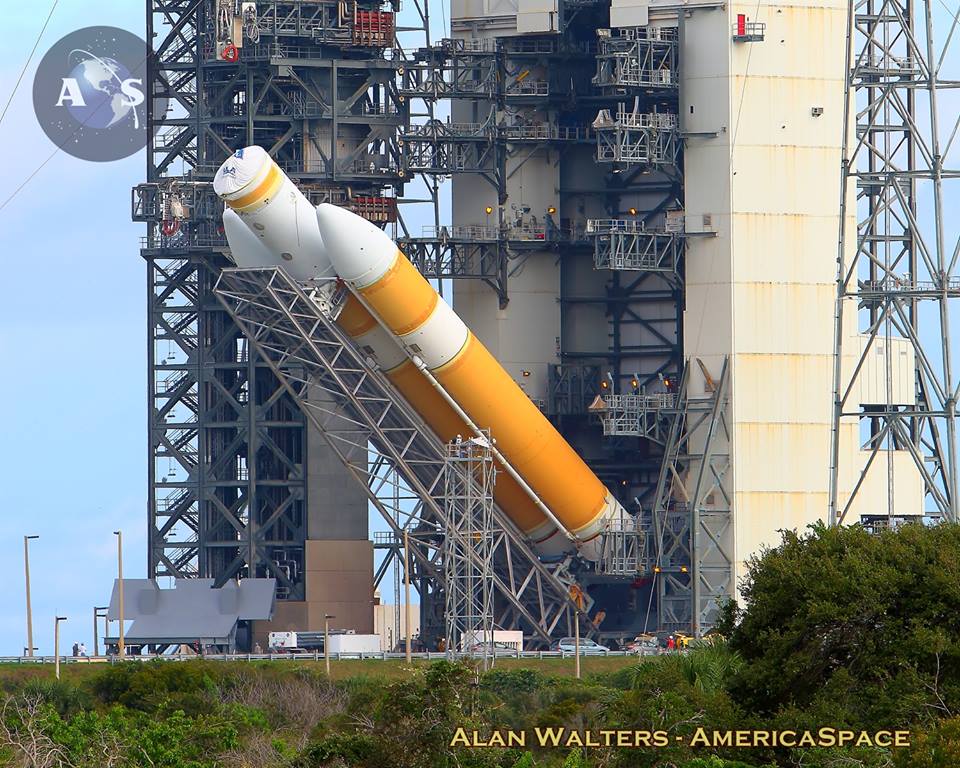
The Florida rainy season is in full swing, and after two consecutive days of weather delays United Launch Alliance (ULA) has now delivered their Delta-IV Heavy rocket to Cape Canaveral’s Space Launch Complex-37B for December’s high-profile Orion Exploration Flight Test-1 (EFT-1) mission for NASA. Having waited out the daytime rains and lightning threats for two straight days, ULA took advantage of an overnight opening in between storms and decided to roll out the giant rocket from its Horizontal Integration Facility (HIF) to nearby SLC-37B just before 10 p.m. EDT Tuesday night.
The rocket’s upper stage, which is now attached to the Heavy and will fire after the initial launch to send Orion farther than any human spacecraft has been since the Apollo moon missions, arrived at the Florida launch site by barge last May, along with the spacecraft adapter and port booster. The two other common core boosters, each powered by a liquid-fueled RS-68 engine capable of producing 700,000 pounds of thrust, arrived in Florida last March. The first booster was attached to the center rocket in June, and the second one was attached in early August. The second stage was moved to the HIF on Aug. 29 and was attached to the first stage on Sept. 12.
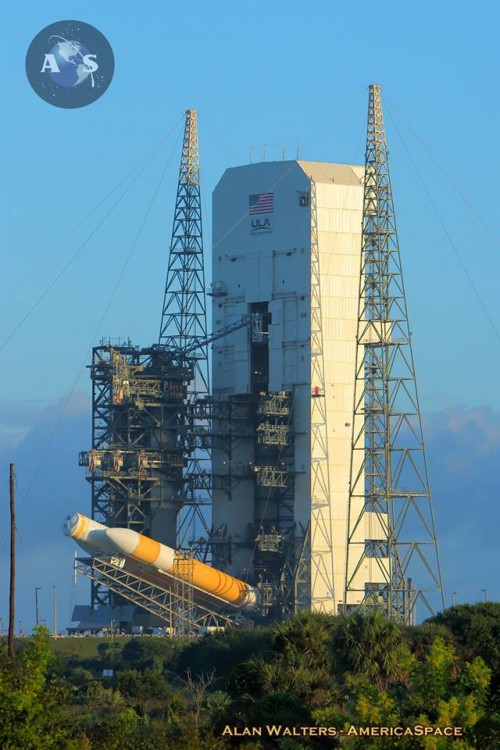
Combined, the three boosters will provide more than two million pounds of thrust to deliver Orion to a high apogee orbit of 3,600 miles—15 times higher than the orbit of the International Space Station and 10 times higher than any human-rated spacecraft has been since Apollo 17 visited the moon in 1972. After reaching altitude on its second orbit Orion will then fall back to Earth for a violent 20,000 mph+ re-entry similar to what astronauts will experience on NASA’s Orion deep space missions in the coming decade, parachuting gently into the Pacific Ocean off the west coast United States (hopefully).
First motion out of the HIF began at 9:51 p.m. EDT on Mon., Sept. 30, with the Delta-IV Heavy going vertical on the adjacent launch pad at 11:15 p.m. EDT this morning (Tues., Oct. 1). Crews worked throughout the night to ready the vehicle to go vertical, and shortly after sunrise today ULA hoisted their 185-foot-tall, triple-core rocket into launch position.
“This is a tremendous milestone and gets us one step closer to our launch later this year,” said Tony Taliancich, ULA’s director of East Coast Launch Operations. “The team has worked extremely hard to ensure this vehicle is processed with the utmost attention to detail and focus on mission success.”
During major testing in the HIF experts from NASA’s Launch Services Program monitored the work on consoles in Hanger AE at Cape Canaveral Air Force Station, which is home to the Kennedy Space Center’s upgraded Launch Vehicle Data Center.
Over the next month and a half, ULA will prepare the rocket for launch and ready it to receive NASA’s Orion Crew Capsule, which is currently fueled for its flight test and is now receiving its final piece of hardware, the Launch Abort System, which is being installed on Orion inside Kennedy Space Center’s Launch Abort System Facility, just a few miles from SLC-37B.
According to Mark Geyer, NASA Orion Program Manager, Orion is expected to arrive at SLC-37B to meet its launch vehicle and be stacked atop the Delta-IV Heavy on Nov. 10 or Nov. 11.
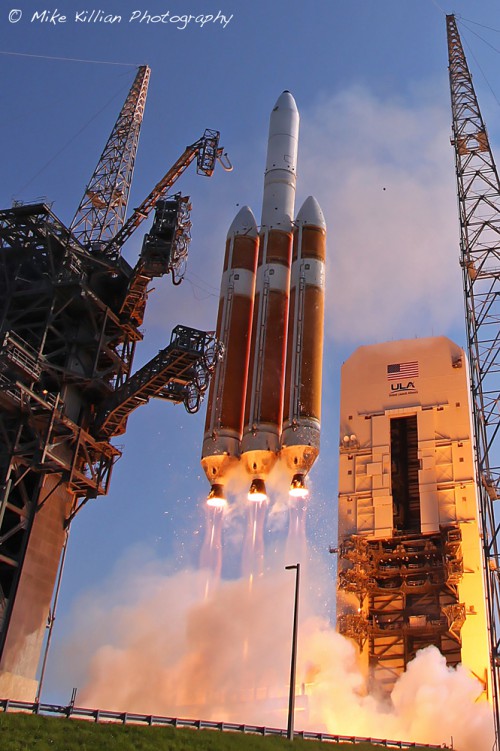
The Heavy rocket itself is exactly the same as has been flown seven times previously, and so processing of the three impressive 133-foot-long common core boosters (testing, checkout verifications, etc.) and the rocket’s second stage was standard operations for ULA. However, the Orion payload is unique; its larger than the top secret classified government satellites the Heavy is usually responsible for launching. Its payload fairing is taller and has a larger diameter than what SLC-37’s Mobile Service Tower (MST) can accommodate, and so ULA has made several modifications to the MST in recent months to support processing Orion for its December flight.
“The Delta IV Heavy is the world’s most powerful launch vehicle flying today, and we are excited to be supporting our customer for this critical flight test to collect data and reduce overall mission risks and costs for the program,” said Taliancich.
Now that Orion’s Delta-IV Heavy is at the pad, ULA will perform extensive launch vehicle readiness testing over the next several weeks, then fuel the giant rocket with liquid Hydrogen and liquid Oxygen and perform a Wet Dress Rehearsal, which is also known as a practice countdown. Shortly after Wet Dress Rehearsal, Orion will be stacked on top of the Delta IV Heavy and will be launched a few weeks later.
Orion is currently scheduled to launch on the EFT-1 mission on the morning of Dec. 4, 2014. During the two-orbit, four-hour mission, engineers will evaluate the systems critical to crew safety, the launch abort system, the heat shield, and the parachute system. The data gathered during the mission will influence design decisions and validate existing computer models. The flight also will reduce overall mission risks and costs for later Orion flights, which will fly atop NASA’s mammoth Space Launch System (SLS) rocket, the first of which is already being built for an inaugural launch “No Later Than” Nov. 2018.
AmericaSpace is one of only a few space news outlets providing on-site coverage of Orion’s EFT-1 mission processing, follow our EFT-1 MISSION UPDATES page and check back regularly for updates.
BELOW: Additional photos of the Delta-IV Heavy getting ready to roll out and going vertical at SLC-37 for Orion’s December EFT-1 mission. All photos copyright Alan Walters and Mike Killian for AmericaSpace, all rights reserved, unauthorized use is prohibited.
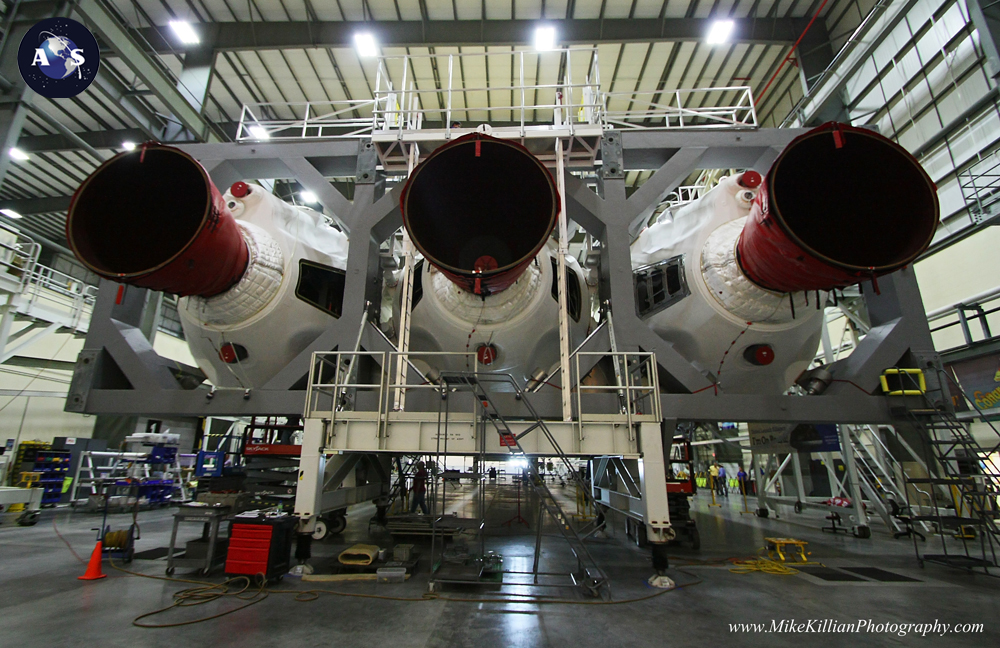
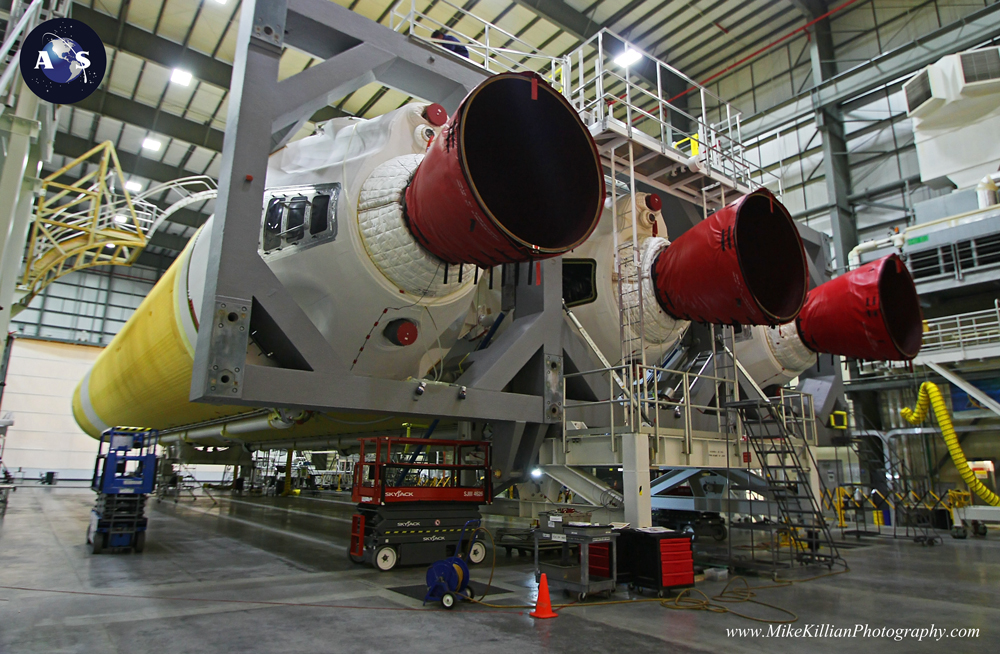
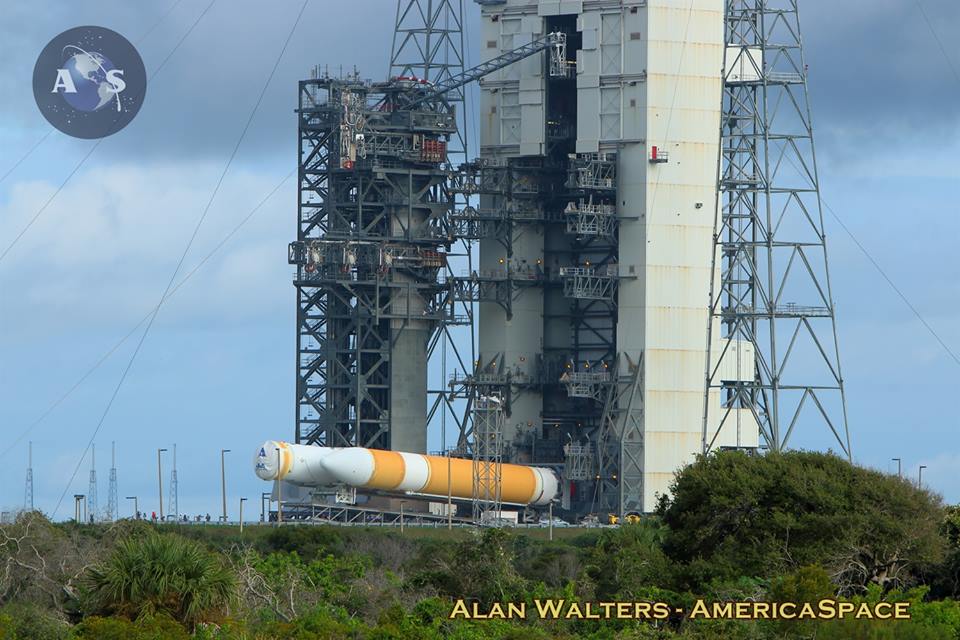
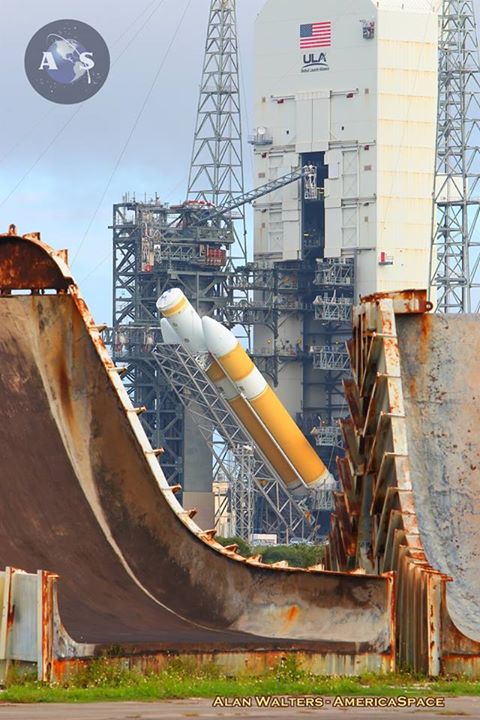
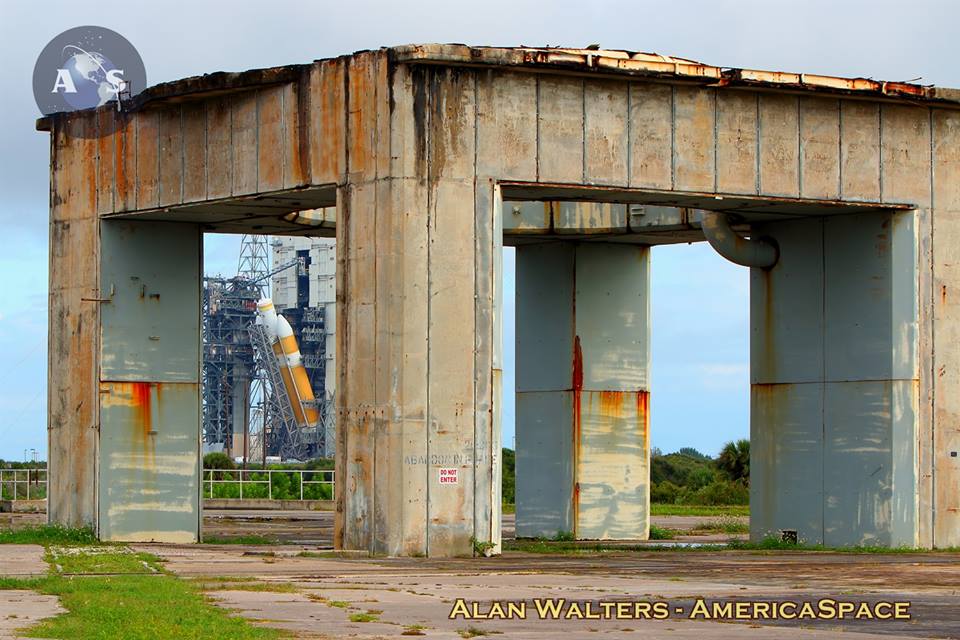
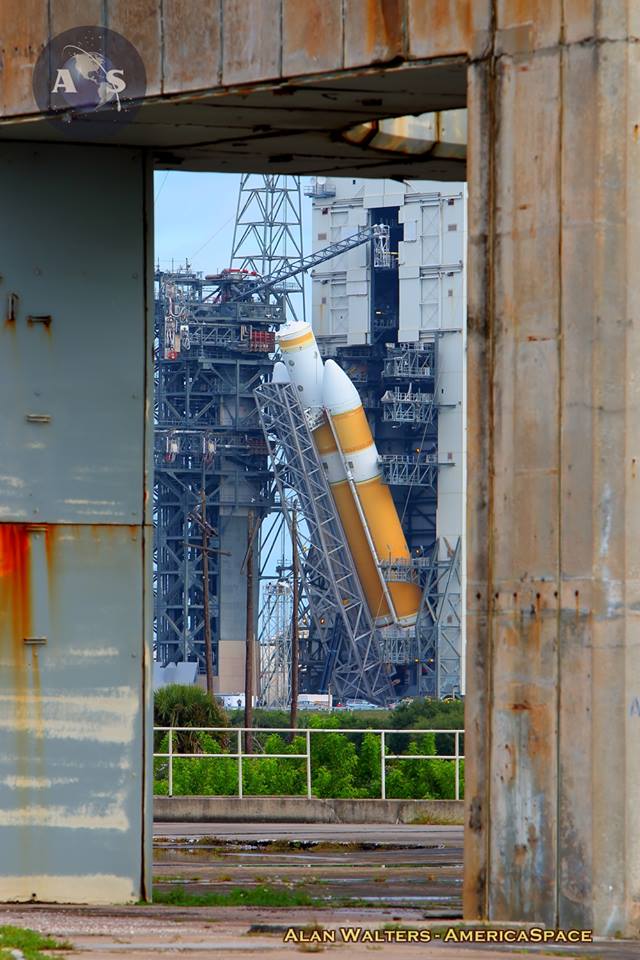
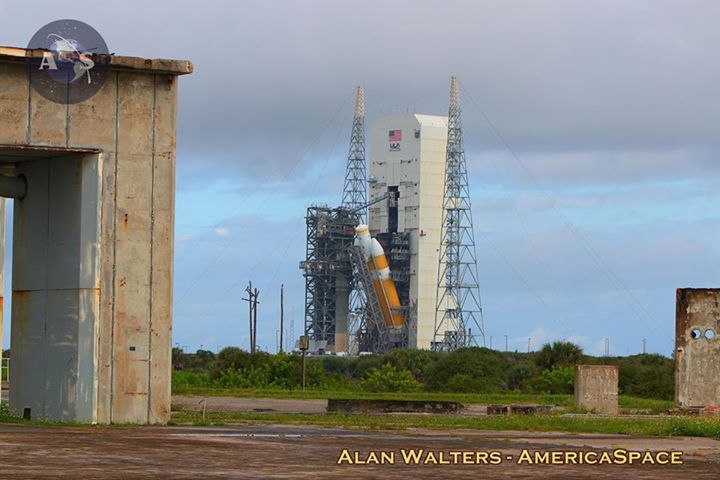
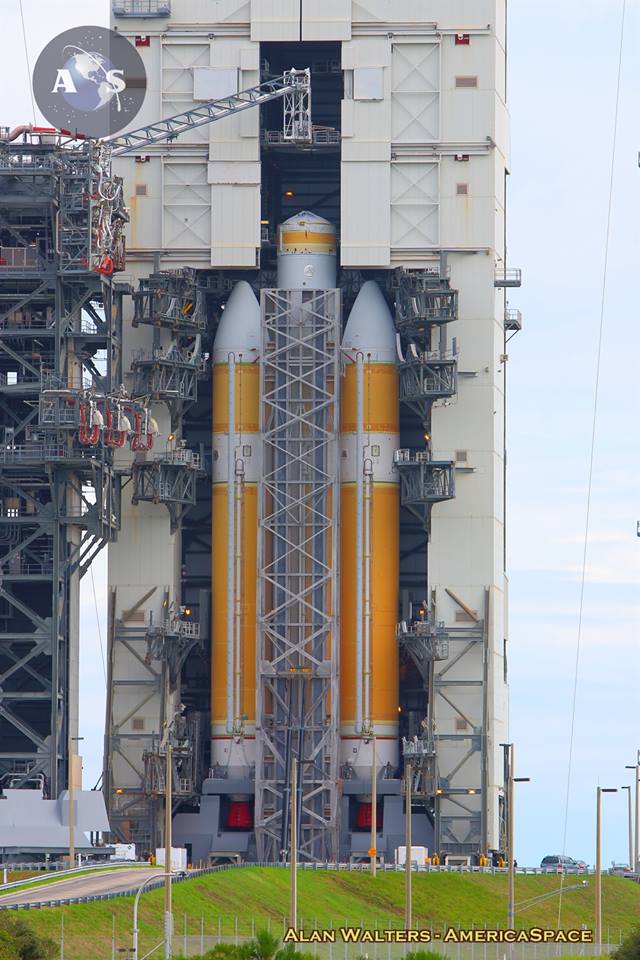
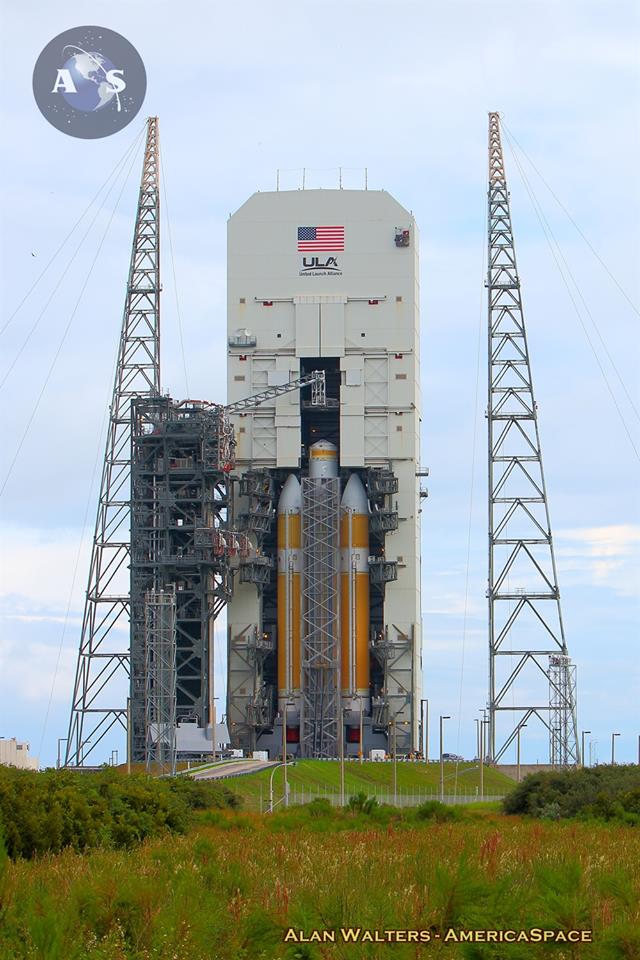
– Want to keep up-to-date with all things space? Be sure to “Like” AmericaSpace on Facebook and follow us on Twitter: @AmericaSpace
Missions » SLS » EFT-1 »




Gooooo Orion!
Yes go and up for the proud NASA